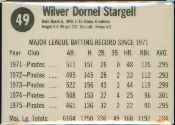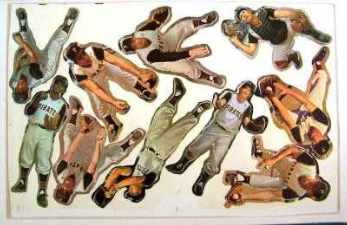1965 Topps #389 Don Larsen (Astros)


Please wander around the website for more info, prices, values & images
on vintage baseball, football, basketball, hockey, sport and non-sports cards.


1976 Hostess Twinkies Baseball
Special versions cut from the Twinkies boxes.
They have same fronts as regular 1977 Hostess but the backs were
slightly different.
Click for complete
1976 Hostess Baseball Checklist, Values & Info
Note: You may be on that page right now. Click for complete 1976 Hostess Baseball Checklist, Values & Info |

1960 Pirates Tag-Ons Stickers This super neat item was similar to but 8 years BEFORE
one of my favorites, the 1968 Topps Baseball Action Stickers.
There's a link to that issue at the bottom of this snipet.
This super neat item was similar to but 8 years BEFORE
one of my favorites, the 1968 Topps Baseball Action Stickers.
There's a link to that issue at the bottom of this snipet.
This great item was issued by Richard-Lawrence Co. of Pittsburgh
and honors the legendary World Series champion 1960 Pirates who
had just humbled the mighty Yankees.
Click for complete |

Starting approximately in 1886, sportscards, mostly baseball cards, were often included with tobacco products, for promotional purposes and also because the card reinforced the packaging and protected cigarettes from damage. These sports cards are referred to as tobacco cards in the baseball card hobby. Over the next few years many different companies produced baseball cards. Tobacco cards soon started to disappear as the American Tobacco Company tried to develop a monopoly by buying out other companies.
They were reintroduced in the 1900s, as American Tobacco came under pressure from antitrust action and Turkish competition. The most famous and most expensive, baseball card is the rare T206 Honus Wagner. The card exists in very limited quantities compared to others of its type because Wagner forced the card to be removed from printing. It is widely (and incorrectly) believed that Wagner did so because he refused to promote tobacco, but the true explanation lies in a dispute over compensation.
Soon other companies also began producing baseball and football cards. Sports magazines such as The Sporting News were early entries to the market. Candy manufacturers soon joined the fray and reflected a shift toward a younger target audience for cards. Caramel companies were particularly active and baseball cards were one of the first prizes to be included in Cracker Jacks. World War I soon suppressed baseball card production.

